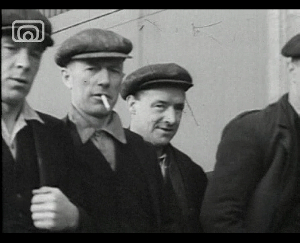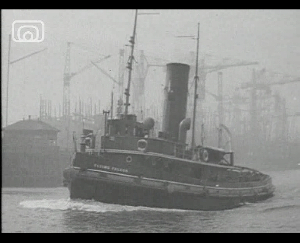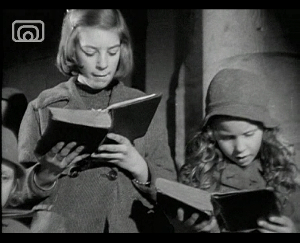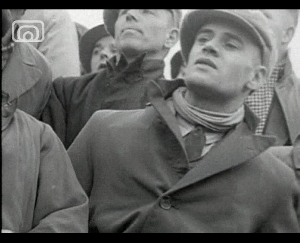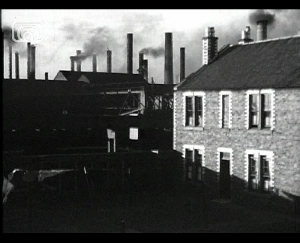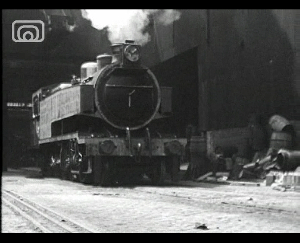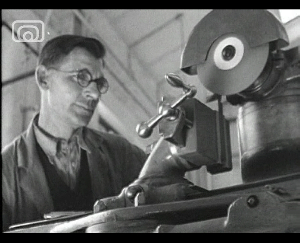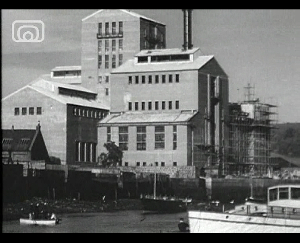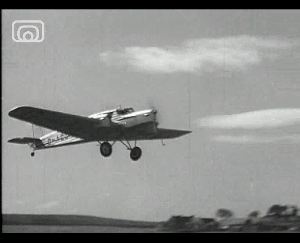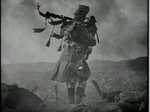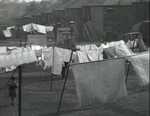Scottish Identity
- Introduction
- Lesson
- Film Clips
- Print All
Introduction
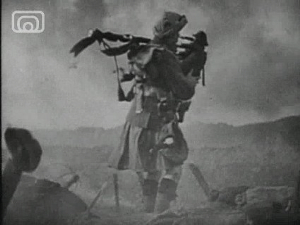
What does it mean to be Scottish? Is it determined by what is written on an individual’s birth certificate or is it something different?
Has the image of what it means to be Scottish changed over the centuries?
These kinds of questions are central to debates surrounding how identity is constructed.
Often identity is seen to be composed of a few overlapping factors, including: ethnicity, religion, class, gender, sexuality and nationality.
National identity is generally understood to be based upon a shared geographical location, history, language and culture. The stereotypical image of a 'Scotsman' is one who wears a kilt, has ginger hair, eats haggis, drinks a lot of whisky, and plays bagpipes. This postcard image (one that is perpetuated by television programmes like The Simpsons) is at odds with how the majority of people living in Scotland today view themselves. However, the stereotype might hold some truths.
This resource focuses on how Scottishness was presented to the public during the early twentieth century through two documentary films. Each film portrays what it means to be Scottish in a different light. Watch and discuss the films and think about your own perceptions of national identity as you do so.
Lesson
Activity
What do people outside of Scotland, or newly arrived in Scotland, understand to be typically Scottish? What are your own perceptions of what it means to be Scottish?
Keep a record of these thoughts and then compare them after viewing each film.
The Face of ScotlandDirected by Basil Wright in 1938, this short documentary was part of a collection of films made for the 1938 Empire Exhibition in Glasgow under the supervision of John Grierson. The film presents a very positive depiction of Scottish life during the late 19th and early 20th centuries, ranging from discussions about how the land has defined Scottish identity to how a football match is symbolic of a new, vibrant and strong national identity and pride.
The film begins with establishing shots of the Scottish countryside and of Hadrian’s Wall, whilst the commentary conveys a sense of nostalgia and pride.
Questions
In what ways does the music set the tone for the film? How does this match up with the images presented on the screen?
Activity
Compare this film with how the Scottish Tourist Board (Visit Scotland currently presents rural Scotland. What has changed? Do either approaches demonstrate something essentially Scottish?
Create a website or poster that depicts what you regard as the ‘real’ Scotland. Would this version of Scotland appeal to tourists?
The film suggests that the countryside is important to Scottish identity and that the land has created the culture and traditions of Scotland. This relationship between human and land helps to create an image of Scottish identity as rugged and hard working. The film also argues that religion has played a fundamental role in Scottish society.
Questions
- How does religion play a part in creating a sense of self?
- Is religious belief, or not holding religious beliefs, important to you or your community?
Activity
Research Calvinism in Scotland and John Knox. Examine how the reformation changed Scottish society.
Scotland played a pivotal role during the Industrial Revolution and changed the face of Scottish society. Steel, coal, water, and iron were the core resources that Scotland could offer the world. People were drawn away from rural areas to the cities with the promise of work and wealth. The film argues that core Scottish identity did not change, however. The work ethic that was integral to the crofters was easily transferred to the industrial factories and shipyards; the class equality that was emerging within the Scottish education system was present in the surroundings of the pub; those who fought in the First World War demonstrated the same sense of determination as those playing football.
Questions
- Examine the editing in the film from 8:04 in the film. What kind of mood is this trying to create?
- How does it differ to the scenes of the countryside early on in the film?
Activity
The film cuts between scenes of urbanisation and decaying rural areas. Discuss the effect(s) of this on the audience.
Watch the footage from the football match (from 11:51) and write down the emotive words that the narrator uses. What do these words suggest about Scottishness? How is this different to other national identities?
Who is not represented in the film? If this type of film was made again today, which faces of Scotland should it show?
Wealth of a NationThe film 'Wealth of a Nation' was also part of the collection of films made for the 1938 Empire Exhibition and was directed by Donald Alexander.
It depicts an alternative view of Scotland to Wright’s film. Where Wright’s focused on the development of a Scottish ‘character’ and how this has been shaped by the environment, this film focuses on the impact industry and economics has on identity and Scotland’s future.
During the early twentieth century, Scotland’s urban economy was centred on three core industries – coal, steel, and iron. These industries enabled some of the Scottish labour force to earn a decent living wage, one where they could provide for their families. During this time many people left the rural environment and sought work within cities like Glasgow.
Activity
Pay attention to the language used by the narrator: what kind of tone is established? Throughout the film pick out phrases that present a positive viewpoint and compare these to phrases that have more negative connotations.
The film creates a sense that the Depression of the 1930s was out of Scotland’s control.
Questions
- The film suggests forces outside of Scotland are to blame for the effects of the Depression. Who are these forces? Do you agree?
- As the industries declined who were seen as scapegoats? Does this have any resonance for today?
Activity
Research and create a photo montage of how industries and jobs in your area changed during the Twentieth Century. Use National Library of Scotland map resources to help you work out where different industries were located.
After the Depression, Scotland invested heavily in the creation of roads, train lines and air travel to link rural areas with urban areas, which in turn helped to increase trade.
The image that is presented in the film is one of optimism and hope.
Questions
- Compare those individuals who appear in the footage relating to planes to those on the shipyards.
- The narration makes it sound as if everyone can afford air travel (referring to crofters), but this might not be the case. Therefore who is being omitted from this ‘new’ Scotland?
Donald Alexander is very clever to show both positive and negative images of the future Scotland, yet his skill as a documentary filmmaker ensures that the positive comes through more. He creates a notion that Scots had previously centred their lives on work, but to increase a sense of happiness, leisure became equally important. The narration suggests this and the images reflect this viewpoint.
Questions
- How do images help to reinforce meaning in film?
- Find out what “anchorage” means and try to find examples of it within the film (and whenever you watch something).
- Create a display of the effects of anchorage.
Activities
Classroom Discussion:
What do the films say to us?
- What are the people like in the films? How do we get a sense of their identity through the way they dress, the way they talk, their expressions and actions?
- What do you notice about the different types of camera shots used in the films? How does lighting play a role in creating mood and tone in the films?
- How do the people in films behave in front of the cameras? Does the dialogue used sound realistic?
- Both films have narrators. Does this give the films a sense of authority? Should we question everything that we are told in the films?
- Who do you think were the intended audience for these films?
Filmmaking Group Activity
Building on what you've learned from the two films, create a short documentary film relating to what you regard as Scottishness.
- Focus on issues of Scottish identity from a variety of perspectives - include excerpts or information and perspectives from the interviews that you might conduct which highlight cross-cultural understandings
- Examine one of the films closely, looking at what kind of camera shots are used and replicate this in your group giving it a contemporary twist.
- Think about how sound and music is used to convey meaning in the films and update this in your film. Will you use a voiceover or will you have a presenter?
- Ensure that you convey both positive and negative aspects of Scottish identity.
- You can also watch films made by young people for the National Library of Scotland's film competition 'What Scotland Means to Me'
This lesson guide was prepared by Andy Wallis, English / Media Studies Teacher - Islay High School Updated September 2019.
